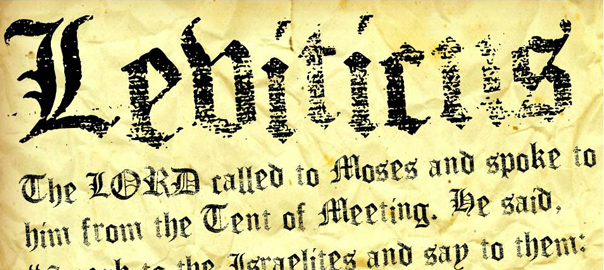We Begin the Book of Leviticus: Telephone Torah Study

It’s our favorite time of the year! Drumroll please! The beginning of Leviticus! A Call to Approach God highlights this week’s Torah portion, Vayikra (Lev. 1:1-5:26).
Jump to: Suggested reading | Selected verses of the week
To join in on the conference call, please dial 702-851-4044, when prompted punch in 2, then our pass code 22252#.
In ‘Looking through the Smoke: A Transparent Message,’ URJ commentator Robert Tornberg argues underneath the seemingly inane details of Leviticus is its true message: “We are a kingdom of priests and a holy nation.”
Reading much of the Book of Leviticus (Vayikra, the third Book of the Torah), and its first parashah – also called Vayikra – can feel like searching for meaning through smoke as thick as that produced by the very sacrifices the book and our parashah describe. It is dense, repetitious, and seemingly relates little to our lives.
In this portion we learn about the various laws pertaining to the five types of sacrifices offered by Jewish worshippers for over a thousand years. These sacrifices took place in the portable sanctuary – the Tabernacle or “Tent of Meeting” in the wilderness – and later in the Temple in Jerusalem. They included:
- The olah, “burnt offering” (Leviticus 1:1-17): This voluntary korban (“sacrifice,” coming from the root “to bring close”) was the most common offering, bringing the donor closer to God. Always an animal, it was slaughtered and fully burned, that is, sent up to God. Hence the name olah, which means “goes up.”
- The minchah, “meal offering” (Leviticus 2:1-16): Generally also a voluntary offering, the minchahconsisted of flour and oil (unleavened), cooked or uncooked. A portion was to be burned on the altar together with the spice, frankincense. The rest was eaten by the priests. This offering was often given by those too poor to afford an animal for the olah (see Vayikra Rabbah 3:1)
- The zevach sh’lamim, “offering of well-being,” sometimes called a “peace offering” (Leviticus 3:1-17): This offering of thanks or gratitude was not completely burned. A prescribed portion was burned on the altar, part was given to the “priests,” kohanim, and the rest was eaten as a festive meal shared by the donor and guests.
- The chatat, “purgation or sin offering” (Leviticus 4:1-35; 5:1-13): This offering was given to atone for an unintentional sin (related to the word, chet – sin, denoting “missing the mark”). The sin involved could be individual or communal, and the offering was most often an animal (although a meal offering was acceptable). The sacrifice involved splashing the blood on the altar, then allowing the priests to eat the meat of the animal.
- The asham, “reparation or guilt offering” (Leviticus 5:14-26): The asham was handled in the same way as the chatat except that it was required that this sacrifice be a ram. It was most usually offered by someone who had stolen property. The offender had to restore what was taken plustwenty percent, and then bring the asham to be forgiven by God.
Continue reading on Union Reform Judaism’s website
1. It is a law for all time throughout the ages, in all your settlements; you must not eat any fat or any blood. (Lev.3:17)
2. If a person incurs guilt—When one has heard a public imprecation but (although able to testify as having either seen or learned of the matter) has not given information and thus is subject to punishment. (Lev, 5:1)
3. Or anything else about which one swore falsely, that person shall repay the principal amount and add a fifth part to it. One shall pay it to its owner upon realizing guilt. (Lev. 5:24)




